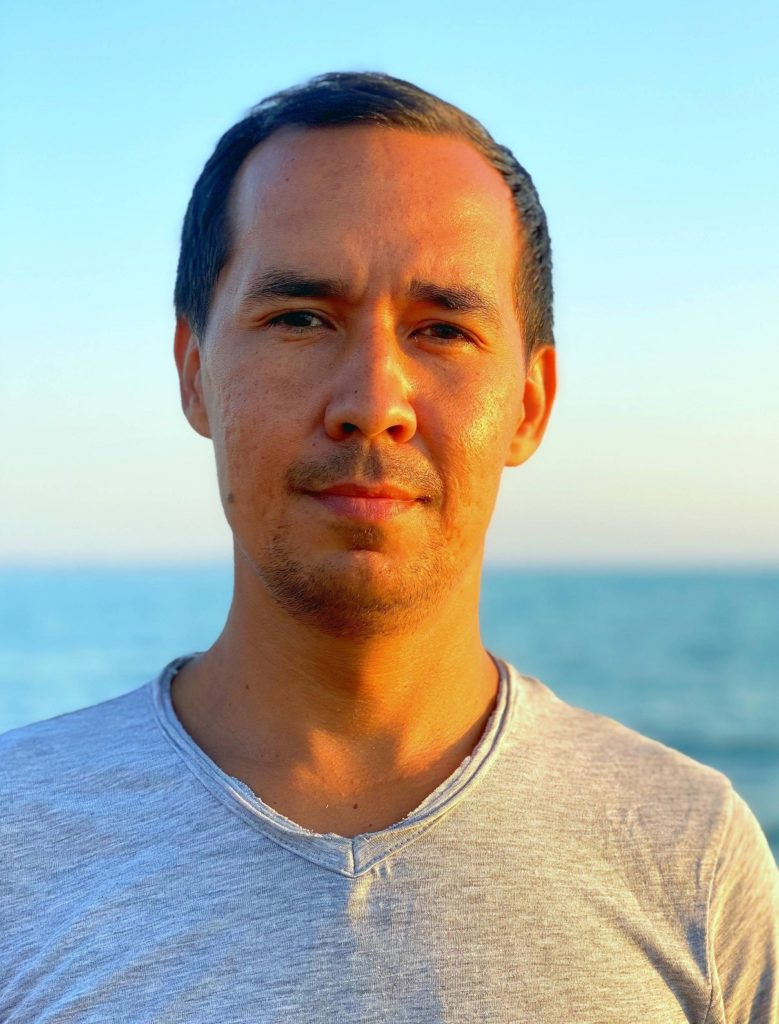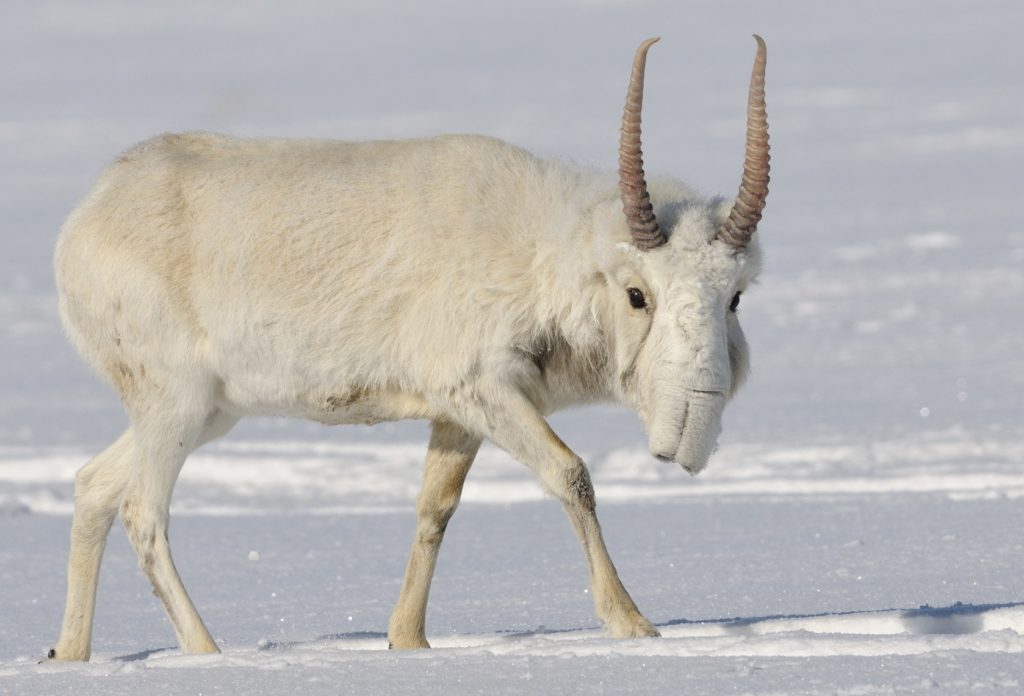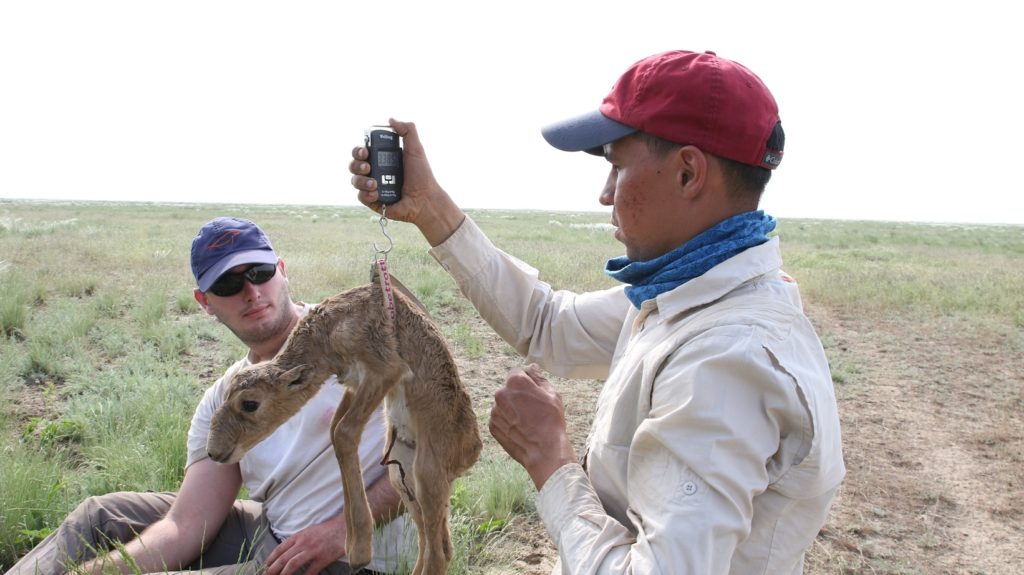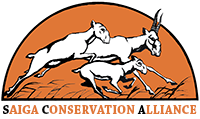We are very happy to highlight that Albert is also SCA’s Steering Committee member!
“The Saiga Antelope is a symbol of the Eurasian steppe for the nomadic people it shares its habitat with, and has been an important source of inspiration for centuries.”

London, 26 April: UK charity Whitley Fund for Nature (WFN) is recognising Albert Salemgareyev from Kazakhstan with a 2023 Whitley Award for his conservation work with the saiga antelope, a keystone species of the Central Asian steppe grasslands, whose population has rebounded to a record high. His project will address the emerging conflict between saiga and pastoralists amid a scarcity of water that could threaten this global conservation success story.
WFN Patron, HRH The Princess Royal, will present the prestigious £40,000 prize to Albert and five other winners on 26 April at the Royal Geographical Society in a ceremony that also marks the 30th anniversary of the Whitley Fund for Nature, livestreamed to YouTube.
WFN Trustee Sir David Attenborough said that the work of conservationists has never been more urgent: “We need the work of Whitley Award winners to succeed and to help them to whatever extent possible.”
Kazakhstan’s vast sprawling steppe landscapes are a globally important carbon store and home to 95 percent of the world’s population of the Critically Endangeredsaiga. In a spectacular comeback, the saiga now number 1.3 million individuals after falling to a low of 50,000 in 2006. A catastrophic bacterial infection subsequently wiped out over 200,000 individuals in just three weeks, in one of the most dramatic declines ever recorded for a mammal.
Unique among antelopes for having large downward facing nostrils that both cool the extremely hot summer air and equally warm the freezing winter air, the saiga is potentially under threat again close to the country’s newest protected area as human-wildlife conflict flares. The areas around the 657,000-hectare Bokey Orda State Nature Reserve and Ashiozek State Nature Sanctuary contain important grazing grounds and water resources for the livestock of local pastoralists. This is leading to competition across the steppe landscapes with the migratory saiga that move in herds of tens of thousands and which also rely on the region’s freshwater resources, which they congregate near to give birth.

Albert, who is Lead Specialist at the Association for the Conservation of Biodiversity of Kazakhstan (ACBK) has a history of success where his research has contributed to the creation of more than four million hectares of protected land across Kazakhstan, including the new sites of Bokey Orda and Ashiozek.
Through this project, he will seek to understand the nature of the emerging conflict affectingthe Ural saiga population and the estimated 300 pastoralists living in the landscape around the Bokey Orda and Ashiozek Protected Areas. Amid calls for hunting of saiga to resume to control rising populations, Albert and his team aim to drive consensus and find sustainable solutions in a new community approach for Kazakhstan to include all stakeholders: the pastoralists, staff of the Protected Area as well as local government and civil society organisations.
“Emerging human-wildlife conflict between saiga and local pastoralists and farmers is requiring an urgent attention, but the solutions are not easy or quick.”
Kazakhstan’s vast western desert-steppe ecosystems are especially vulnerable to climate change. The country’s work to conserve and restore its steppe which spans 750,000 square kilometres was recognised by the United Nations in December as a World Restoration Flagship, one of only ten pioneering efforts to revive the natural world. However, anthropogenic and climate stresses are expected to contribute to significant water scarcity in Kazakhstan within a decade, according to the World Bank.
Albert’s project will map the distribution and management practices of all major water resources that are vital for supporting life on the steppe and combine this with existing data on both livestock and saiga distribution in relation to those water resources. Focusing on 15 hotspots, Albert and his team will gather scientific evidence and consult with local stakeholders to better understand the conflict, and then build trust among pastoralists, Protected Area staff and local government in the data that has been gathered. Together, these stakeholders will co-design strategies for sustainable resource management, and share their findings widely to inform saiga conservation across Kazakhstan and into neighbouring countries.

One of the oldest surviving species of “the mammoth fauna” that inhabited a vast area of cold steppes from the British Isles in the west to China in the east, saiga help revitalize the steppe by grazing steppe grasses, spreading plant seeds and moving nutrients through the landscape.
The saiga survived the Ice Age and now global warming: “Surviving in difficult natural and climatic conditions allows saiga to remain the most important species in steppe, semi-desert and desert ecosystems,” according to Albert. “These ecosystems must be protected and restored, and their nature and natural resources used sustainably in the future.”
You can find out more about all the winners of the Whitley Award 2023 here.
